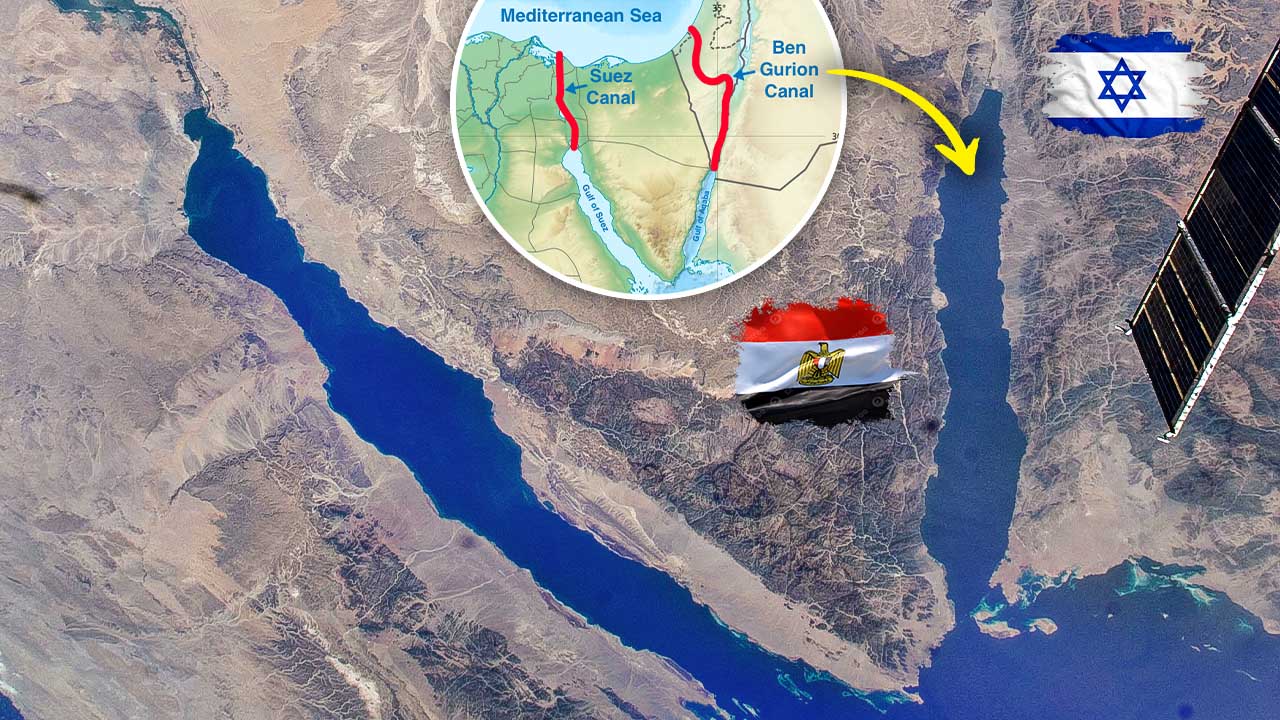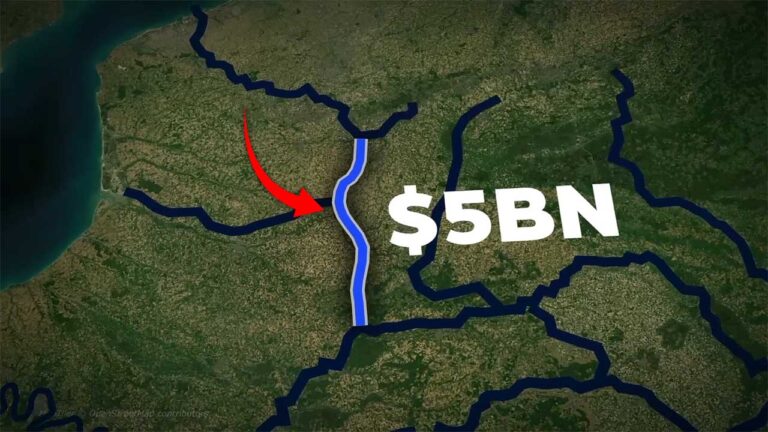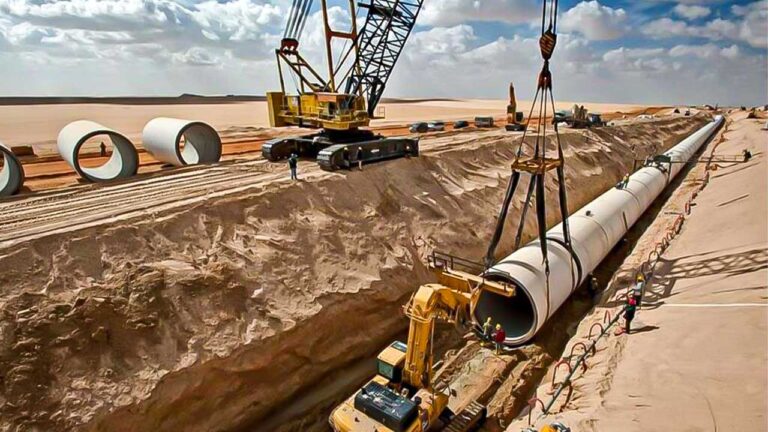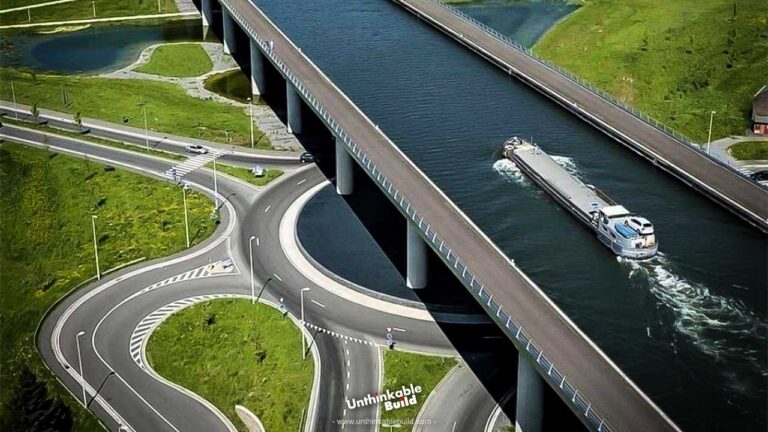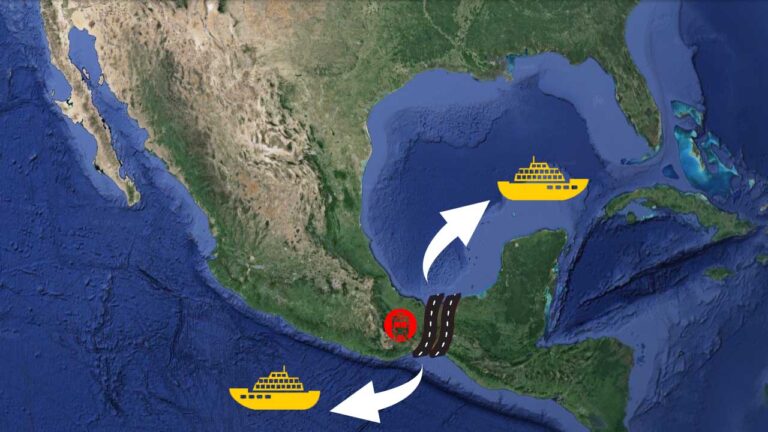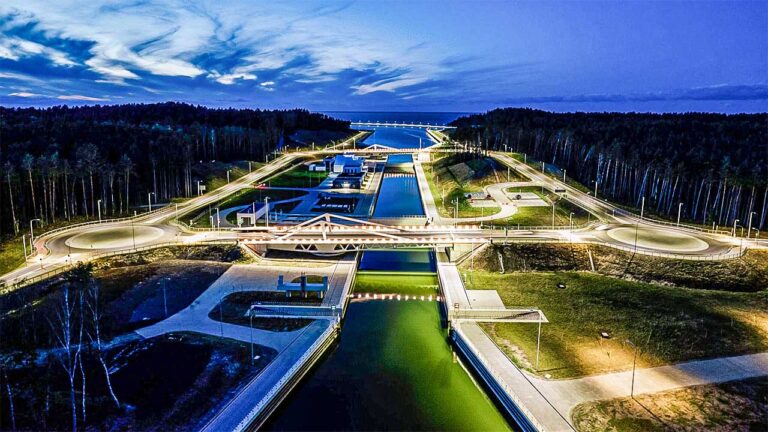Ben Gurion Canal will Drastically Reshape Regional Power Dynamics
While the world focuses on the ongoing war between Israel and Hamas, news has resurfaced about plans for a controversial mega-project: the construction of a new canal. This project, which has been discussed for decades, could significantly impact global trade. Approximately 10% of all World Trade currently passes through the Suez Canal, a key route connecting Europe and Asia via the Eastern Mediterranean and the Red Sea. The construction of a new canal parallel to the Suez could drastically reshape regional power dynamics and global trade. In this context, Israel’s plans to build a canal to rival the Suez have gained attention. Notably, the proposed route for Israel’s canal intersects with Gaza, raising questions about the potential role of this infrastructure project in the ongoing conflict. The implications of such a development could be far-reaching, affecting not only the region but also international trade and politics.
The Suez Canal has been a key player in propelling Egypt’s economy forward. As a significant revenue generator, it collects tolls and transit fees from the numerous vessels crossing its waters. In 2021, the canal witnessed a considerable uptick in traffic, with 20,649 Vessels passing through, marking a 10% Increase from 2020. The fiscal year ending on June 30, 2023, saw the canal earning an unprecedented $9.4 Billion in revenue, surpassing the previous year’s $8 Billion.
Also Read: Indonesia’s Cirata Floating Photovoltaic Power Plant is Largest in Southeast Asia
The canal’s significance extends beyond its economic value; it’s a vital conduit for global trade, efficiently linking Europe and Asia. This man-made marvel, connecting the Mediterranean to the Red Sea, was a colossal undertaking, demanding over a decade of labor from tens of thousands of workers. Since its grand opening in November 1869, the Suez Canal has drastically shortened maritime journeys between Europe and Asia, benefiting Egypt and neighboring regions.
However, the proposed Ben Gurion Canal, potentially rivaling the Suez Canal, casts a shadow over Egypt’s economic fortunes. This new canal represents not just an engineering challenge but a geopolitical one. Its control would significantly influence global trade routes, including those for oil and grain. The construction of a parallel canal could gravely impact Egypt’s economy, challenging the Suez Canal’s long-standing dominance in global maritime trade.
The idea of the Israeli Canal, later known as the Ben Gurion Canal, was first given in the Mid-1800s. At that time, the British contemplated a canal project to connect the Red Sea with the Dead Sea. In 1955, William Allen, an English naval officer and explorer, proposed an alternative to the Suez Canal. Allen’s vision was a cost-effective canal linking the Red Sea, the Dead Sea, and the Mediterranean Sea. The proposed route would connect the Mediterranean at the Gulf of Aqaba, extending to the Red Sea and the Indian Ocean.
The United States showed interest in this idea in 1963, viewing it as a countermeasure to Egyptian President Gamal Abdel Nasser’s 1956 decision to nationalize the Suez Canal. However, the Israeli Canal project only came to public attention in 1994, named after Israel’s first Prime Minister David Ben Gurion.
The proposed Ben Gurion Canal aimed to link the Red Sea to the Mediterranean. Starting from the southern end of the Gulf of Aqaba, near the port city of Eilat and the Jordanian border, it would traverse the Arabah Valley. The canal would cut through approximately 100 km between the Negev Mountains and the Jordanian Highlands, bypassing the Gaza Strip to reach the Mediterranean.
This proposed canal stands in contrast to the existing Suez Canal, an engineering marvel in Egypt that already connects the Red Sea with the Mediterranean. The Suez Canal is a key global trade artery, handling about 10% of World Trade and offering the shortest maritime route between Asia and Europe. Its existence and efficiency have been instrumental in reducing travel distance and time for global shipping.
In April 2021, Israel announced the commencement of the Ben Gurion Canal, expected to start by June 2021. This 293 km long canal, nearly one-third longer than the 193 km Suez Canal, poses a significant financial threat to Egypt’s trade. It is designed to accommodate ships that are too large for the Suez Canal, with its construction estimated at $55 Billion. The control of this canal could greatly influence global supply routes for essential commodities like oil and grain. Israel anticipates an annual revenue of around $6 Billion or more from this project.
Also Read: Restoration Update of Notre Dame Cathedral
The Ben Gurion Canal is not just an economic venture; it represents a strategic reconfiguration of maritime routes. Unlike the Suez Canal, it will feature dual channels to allow Two-Way Traffic and will be equipped with rocky walls, minimizing the need for maintenance. Alongside its impressive dimensions that can accommodate the world’s largest ships, the canal will also foster urban development, with plans for small cities, hotels, restaurants, and nightclubs along its route.
The proposed canal design boasts impressive dimensions: at 50 Meters Deep and 200 Meters Wide, it surpasses the Suez Canal by 10 Meters in Depth. This increased scale allows the accommodation of the world’s largest ships, with maximum dimensions of 300 Meters in Length and 110 Meters in Width, to navigate through it seamlessly.
The construction process itself is an engineering feat, involving extensive planning, dredging, and excavation. Initially, an ambitious plan involving 520 Nuclear Blasts was proposed to carve through Israel’s Negev desert, although it’s unclear if this approach will be used.
The canal’s location is strategic, flowing through the Gaza Strip, starting from the port city of Eilat, crossing the Jordanian border, and snaking through the Arabah Valley to the Dead Sea before circumnavigating the Gaza Strip to reach the Mediterranean. This route has geopolitical implications, especially considering historical plans revealed by declassified documents from the US Department of Energy. These documents from 1963 outlined a plan to use underground nuclear explosions to construct the canal, highlighting its strategic value as an alternative to the Suez Canal and its potential for economic development in the region.
However, these plans also recognized significant challenges, including the political feasibility and the need to relocate populations in the Gaza Strip. The construction of the Ben Gurion Canal, therefore, is not just an infrastructural project but also a complex geopolitical endeavor, reflecting the changing dynamics of global trade and regional politics.
Israel’s motivation to construct its own canal between the Red and Mediterranean Seas stems from historical denials of access to the Suez Canal by Egypt. Since Israel’s establishment in 1948, the Suez Canal was often inaccessible to Israeli shipping, notably during the First Israeli-Arab War of 1948-1949, the Suez Crisis of 1956, and subsequent conflicts up to 1975. The blockade of the Suez Canal, particularly during the wars and the Arab oil embargo, severely restricted Israel’s trade with Africa and Asia, compelling the country to seek oil alternatives, like Venezuelan oil transported via the Atlantic Ocean and the Mediterranean Sea.
Moreover, Western powers, including the USA and the European Union, are interested in alternative routes to the Suez Canal. The Suez Canal’s vulnerabilities were highlighted by natural incidents like the blockage caused by the container ship in March 2021, which disrupted global trade and caused significant economic losses. The construction of the Ben Gurion Canal is seen as a way for Israel to bypass Arab control over the Red Sea and reduce reliance on the Suez Canal, which has been a tool for political pressure.
Strategically, Gaza’s location is pivotal for the Ben Gurion Canal. Most designs propose a detour to avoid Gaza, but controlling Gaza would allow for a more direct route, saving time and money. Additionally, a canal near the Egyptian border could provide Israel with military advantages and strengthen its southern defenses.
The Ben Gurion Canal project, intended to link the Red Sea to the Ashkelon and Gaza areas through Israel, faces significant geopolitical challenges that could have far-reaching consequences. Experts warn that constructing this canal could disrupt the strategic balance of China’s Belt and Road initiative, affect the Mediterranean, and impact the vital Strait of Hormuz, through which 30% of the World’s Energy is transferred. This disruption could potentially trigger global conflict.
One major obstacle to the project is the presence of Palestinians in Gaza. Building the canal would likely require either their expulsion or the imposition of strict control over the area, exacerbating an already tense situation. Furthermore, there is significant resistance from the broader Arab and Muslim world, especially considering the potential implications of such a canal in the Middle East. It is improbable that Muslim states, particularly Iran, would remain passive in this scenario.
Global powers like Russia and China, along with their allies, also pose a challenge. They may oppose any development that threatens the BRICS Alliance and the New Silk Road Initiative. The Israeli canal could disrupt their access to the Mediterranean Sea, escalating tensions to the level of a potential global conflict, reminiscent of the prolonged Arab-Israeli conflicts following the declaration of the State of Israel. This situation suggests that the construction of the Ben Gurion Canal could risk igniting major international conflicts, possibly leading to another war.
However, there exists a more positive outlook. The Ben-Gurion Canal, as a transportation route, might be viable under a scenario where Israel and Palestine reach an agreement, whether through a two-state solution, a union of two independent states, or another form of resolution. In such a context, the canal, traversing Israeli and Palestinian territories, could serve as a conduit for economic integration, benefiting both Jewish and Palestinian communities. Yet, given the tumultuous history of the last 75 Years and the ongoing strife in the region, such an optimistic scenario seems more like a utopian ideal than a practical political solution.

